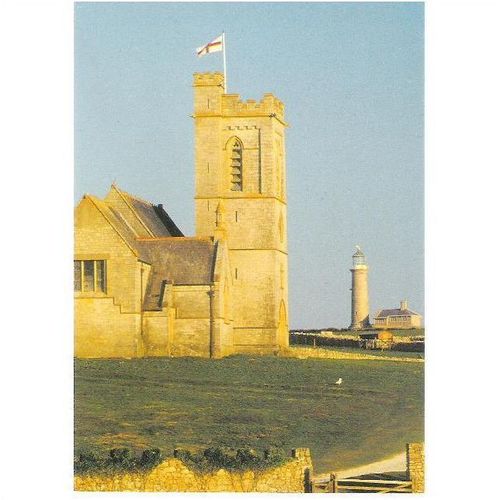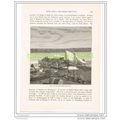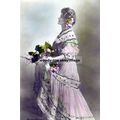Lundy, Devon - Church & Old Lighthouse - Landmark postcard
- Condition : Used
- Dispatch : 2 Days
- Brand : None
- ID# : 122803760
- Quantity : 1 item
- Views : 1017
- Location : United Kingdom

- Seller : justthebook (+1699)
- Barcode : None
- Start : Wed 04 Dec 2013 06:02:07 (EDT)
- Close : Run Until Sold
- Remain : Run Until Sold
Checks/Cheques
 for 1 item(s) edit
for 1 item(s) edit
Shipping Calculator
More Listings from This Seller view all
Seller's Description
- Postcard
- Picture / Image: Church and Old Lighthouse, Lundy Island, Devon
- Publisher: Landmark Trust
- Postally used: no
- Stamp: n/a
- Postmark(s): n/a
- Sent to: n/a
- Notes / condition:
Please ask if you need any other information and I will do the best I can to answer.
Image may be low res for illustrative purposes - if you need a higher definition image then please contact me and I may be able to send one.
------------------------------------------------
Postage & Packing:
UK (incl. IOM, CI & BFPO): 99p
Europe: £1.60
Rest of world (inc. USA etc): £2.75
No additional charges for more than one postcard. You can buy as many postcards from me as you like and you will just pay the fee above once. (If buying postcards with other things such as books, please contact or wait for invoice before paying).
Payment Methods:
UK - PayPal, Cheque (from UK bank) or postal order
Outside UK: PayPal ONLY (unless otherwise stated) please. NO non-UK currency checks or money orders (sorry).
NOTE: All postcards are sent in brand new stiffened envelopes which I have bought for the task. These are specially made to protect postcards and you may be able to re-use them. In addition there are other costs to sending so the above charge is not just for the stamp!
I will give a full refund if you are not fully satisfied with the postcard.
----------------------------------------------
Text from the free encyclopedia WIKIPEDIA may appear below to give a little background information (internal links may not work) :
*************
Lundy is the largest island in the Bristol Channel, lying 12 miles (19 km) off the coast of Devon, England, approximately one third of the distance across the channel between England and Wales. Lundy gives its name to a British sea area and is one of the islands of England.[3] Lundy has been designated by Natural England as National Character Area 159, one of England's natural regions.[4]
As of 2007, there was a resident population of 28 people, including volunteers. These include a warden, ranger, island manager, and farmer, as well as bar and house-keeping staff. Most live in and around the village at the south of the island. Most visitors are day-trippers, although there are 23 holiday properties and a camp site for staying visitors, mostly also around the south of the island.
In a 2005 opinion poll of Radio Times readers, Lundy was named as Britain's tenth greatest natural wonder. The entire island has been designated as a Site of Special Scientific Interest[5] and it was England's first statutory Marine Nature Reserve, and the first Marine Conservation Zone,[6] because of its unique flora and fauna.[7] It is managed by the Landmark Trust on behalf of the National Trust
The name Lundy is believed to come from the old Norse word for ""puffin island"" (Lundey), lundi being the Norse word for a puffin and ey, an island,[8] although an alternative explanation has been suggested with Lund referring to a copse, or wooded area.[9] According to genealogist Edward MacLysaght the surname Lundy is from Norman de la Lounde, a name recorded in medieval documents in counties Tipperary and Kilkenny in Ireland.[10][clarification needed]
Lundy has evidence of visitation or occupation from the Neolithic period onward, with Mesolithic flintwork, Bronze Age burial mounds, four inscribed gravestones from the early medieval period,[11][12] and an early medieval monastery (possibly dedicated to St Elen or St Helen).
Beacon Hill cemetery was excavated by Charles Thomas in 1969.[13] The cemetery contains four inscribed stones, dated to the 5th or 6th century AD. The site was originally enclosed by a curvilinear bank and ditch, which is still visible in the south west corner. However, the other walls were moved when the Old Light was constructed in 1819. Early Christian enclosures of this type are known as lanns in Cornish. There are surviving examples in Luxulyan, in Cornwall; Mathry, Meidrim, and Clydau in Wales; and Stowford, Jacobstowe, Lydford, and Instow, in Devon.
Thomas proposed a five-stage sequence of site usage: (1) An area of round huts and fields. These huts may have fallen into disuse before the construction of the cemetery. (2) The construction of the focal grave, an 11 ft by 8 ft rectangular stone enclosure containing a single cist grave. The interior of the enclosure was filled with small granite pieces. Two more cist graves located to the west of the enclosure may also date from this time. (3) Perhaps 100 years later, the focal grave was opened and the infill removed. The body may have been moved to a church at this time. (4) & (5) Two further stages of cist grave construction around the focal grave.
23 cist graves were found during this excavation. Considering that the excavation only uncovered a small area of the cemetery, there may be as many as 100 graves.
Foundations for a lighthouse on Lundy were laid in 1787, but the first lighthouse (now known as the Old Light) was not built until Trinity House obtained a 999-year lease in 1819. The 96 feet (29 m) granite tower, on the summit of Chapel Hill, was designed by Daniel Asher Alexander, and built by Joseph Nelson at a cost of £36,000.[70] Because the site is 407 feet (124 m) above sea level, the highest base for a lighthouse in Britain, the light was often obscured by fog. To counter this problem, the Fog Signal Battery[71] was built about 1861.
The lighthouse had two lights; the lower a fixed white light and the upper a quick flashing white light, showing every 60 seconds. However this quick revolution gave the impression it was a fixed light with no flashes detectable. This may have contributed to the grounding, at Cefn Sidan, of the La Jeune Emma, bound from Martinique to Cherbourg in 1828. 13 of the 19 on board drowned, including Adeline Coquelin, the 12 year-old niece of Napoleon Bonaparte's divorced wife Josephine de Beauharnais.[72]
Owing to the ongoing complaints about the difficulty of sighting the light in fog, the lighthouse was abandoned in 1897 when the North[73] and South[74] Lundy lighthouses were built. The Old Light and the associated keepers' houses are kept open by the Landmark Trust.[75]
The current North Lundy and South Lundy lighthouses were built in 1897 at the extremities of the island to replace the old lighthouse. Both lighthouses are painted white and are run and maintained by Trinity House.[76]
The North lighthouse is 17 metres tall, slightly taller than the south one, and has a focal plane of 48 metres (157 ft). It produces a quick white flash every 5 seconds,[75] and was originally lit by a 75mm petroleum vapour burner. Oil was lifted up from a small quay using a sled and winch, and then transported using a small railway (again winch-powered). The remains of this can be still seen, but it was abandoned in 1971 and the lighthouse now uses a discharge bulb fed from the island's main supply.[76] In 1985 the northern light was modernised; it was automated six years later and was converted to solar power.[72]
The South lighthouse has a focal length of 53 metres (174 ft) and a quick white flash every 15 seconds.[75] It can be seen as a small white dot from Hartland Point, 11 miles to the south east. It was automated and converted to solar power in 1994.[72]
type=real photographic (rp)
theme=topographical: british
sub-theme=england
county/ country=devon
number of items=single
period=1945 - present
postage condition=unposted
Listing Information
| Listing Type | Gallery Listing |
| Listing ID# | 122803760 |
| Start Time | Wed 04 Dec 2013 06:02:07 (EDT) |
| Close Time | Run Until Sold |
| Starting Bid | Fixed Price (no bidding) |
| Item Condition | Used |
| Bids | 0 |
| Views | 1017 |
| Dispatch Time | 2 Days |
| Quantity | 1 |
| Location | United Kingdom |
| Auto Extend | No |














